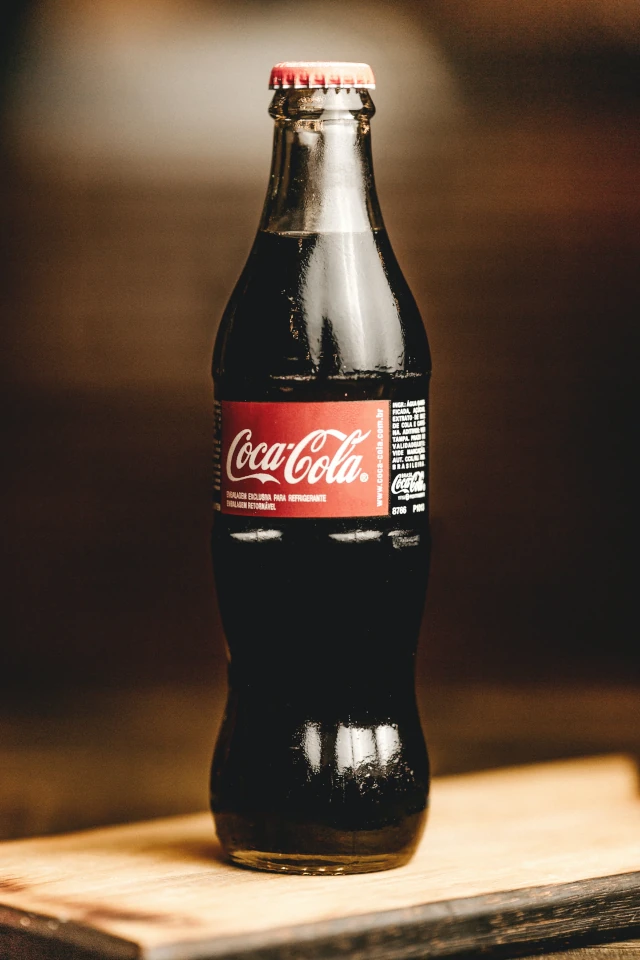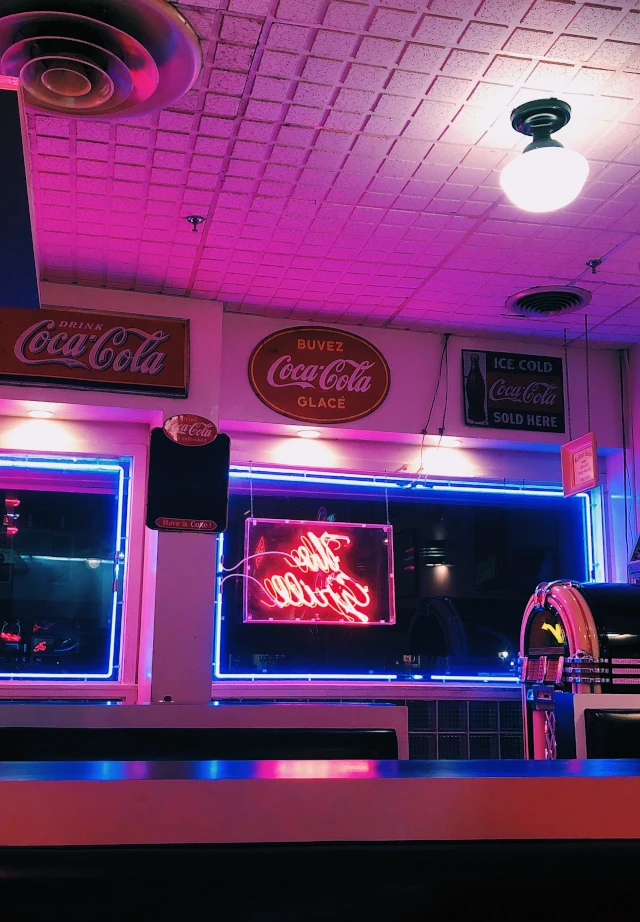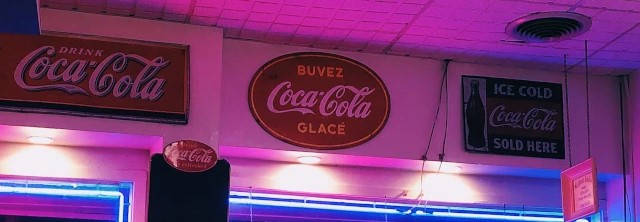Coca-Cola, one of the most recognizable brands in the world, has a marketing strategy that is a study in branding excellence and innovative approaches. Here’s an exploration of Coca-Cola’s marketing strategy.
The Power of Branding
The power of branding in Coca-Cola’s marketing strategy is nothing short of remarkable. The brand has achieved an almost unparalleled level of recognition worldwide, largely thanks to its consistent and iconic visual identity. The distinctive script font, known as Spencerian script, and the classic red-and-white color scheme, have become synonymous with the Coca-Cola brand. This strong and consistent branding transcends cultural and linguistic barriers, making Coca-Cola one of the most recognized words across the globe.

Central to Coca-Cola’s branding success is its ability to evoke feelings of nostalgia and happiness. The company has smartly leveraged its long history, dating back to 1886, to create a sense of tradition and timelessness. This approach to branding goes beyond mere aesthetics; it’s about forging an emotional connection with consumers. The mere sight of a Coca-Cola logo or bottle can evoke fond memories, making it more than just a beverage; it becomes a symbol of joyful moments and shared experiences.
This emotional resonance is further amplified through Coca-Cola’s consistent messaging. The brand has always positioned itself as a purveyor of happiness and togetherness, themes that are universally appealing and enduring. Whether through its classic ads or modern digital campaigns, Coca-Cola has maintained this message, ensuring that the brand remains relevant and relatable to each new generation.
Coca-Cola’s branding strategy also leverages the power of familiarity and presence. By ensuring that their branding is visible in a wide range of contexts – from billboards in bustling cities to small shops in remote villages – Coca-Cola has woven itself into the fabric of daily life around the world. This omnipresence makes the brand feel both global and accessible, a difficult balance that few brands achieve successfully.
Coca-Cola’s branding is a masterclass in how visual identity, emotional resonance, consistent messaging, and strategic visibility can combine to create a powerful and enduring brand. This branding isn’t just about selling a product; it’s about selling an experience and a feeling, one that has resonated with consumers for over a century.
Global Yet Local
Coca-Cola’s “Global yet Local” marketing strategy is a deft balancing act that has played a crucial role in its global success. The company has mastered the art of maintaining a consistent global brand while adapting to local tastes, cultures, and market dynamics. This approach, often termed “glocalization,” allows Coca-Cola to resonate with consumers worldwide, making it not just a global brand, but a locally relevant one as well.
At the heart of this strategy is Coca-Cola’s understanding and respect for cultural differences. In various countries, Coca-Cola tailors its marketing campaigns, product flavors, and even packaging to align with local preferences and traditions. For example, while the classic Coca-Cola flavor is universal, the brand has introduced variations like Thums Up in India and Inca Kola in Peru, catering to local palates. Similarly, Coca-Cola’s advertising campaigns are carefully crafted to reflect local languages, values, and norms, ensuring that the brand’s message is both globally consistent and locally relevant.
This localization goes beyond product and marketing adaptations. Coca-Cola also engages in local community initiatives and partnerships, which helps to build a strong local presence and foster goodwill. By investing in community projects and local economies, Coca-Cola positions itself as a brand that is not just selling a product, but also contributing to the welfare of the community.
The success of Coca-Cola’s “Global yet Local” strategy is evident in its worldwide popularity. In every corner of the world, Coca-Cola is perceived not as a foreign brand, but as one that understands and values local culture. This deep level of local engagement has enabled Coca-Cola to build strong, enduring connections with consumers across diverse geographies.

Coca-Cola’s ability to strike the perfect balance between global appeal and local relevance is a testament to its astute marketing acumen. By respecting and embracing cultural differences, Coca-Cola has become a global brand that is deeply rooted in local communities around the world. This unique approach to globalization has not only driven the brand’s international growth but has also cemented its place as a beloved and familiar presence in the lives of consumers everywhere.
Emotional Marketing
Coca-Cola’s “Global yet Local” marketing strategy is a deft balancing act that has played a crucial role in its global success. The company has mastered the art of maintaining a consistent global brand while adapting to local tastes, cultures, and market dynamics. This approach, often termed “glocalization,” allows Coca-Cola to resonate with consumers worldwide, making it not just a global brand, but a locally relevant one as well.
At the heart of this strategy is Coca-Cola’s understanding and respect for cultural differences. In various countries, Coca-Cola tailors its marketing campaigns, product flavors, and even packaging to align with local preferences and traditions. For example, while the classic Coca-Cola flavor is universal, the brand has introduced variations like Thums Up in India and Inca Kola in Peru, catering to local palates. Similarly, Coca-Cola’s advertising campaigns are carefully crafted to reflect local languages, values, and norms, ensuring that the brand’s message is both globally consistent and locally relevant.

This localization goes beyond product and marketing adaptations. Coca-Cola also engages in local community initiatives and partnerships, which helps to build a strong local presence and foster goodwill. By investing in community projects and local economies, Coca-Cola positions itself as a brand that is not just selling a product, but also contributing to the welfare of the community.
The success of Coca-Cola’s “Global yet Local” strategy is evident in its worldwide popularity. In every corner of the world, Coca-Cola is perceived not as a foreign brand, but as one that understands and values local culture. This deep level of local engagement has enabled Coca-Cola to build strong, enduring connections with consumers across diverse geographies.
Coca-Cola’s ability to strike the perfect balance between global appeal and local relevance is a testament to its astute marketing acumen. By respecting and embracing cultural differences, Coca-Cola has become a global brand that is deeply rooted in local communities around the world. This unique approach to globalization has not only driven the brand’s international growth but has also cemented its place as a beloved and familiar presence in the lives of consumers everywhere.
Digital Marketing Prowess
Coca-Cola’s digital marketing prowess reflects its adaptability and forward-thinking approach in a rapidly evolving digital landscape. Recognizing the shifting patterns of media consumption, particularly among younger demographics, Coca-Cola has invested heavily in digital platforms to engage with consumers in innovative and interactive ways.
Social media has been a key component of Coca-Cola’s digital strategy. The brand skillfully uses platforms like Instagram, Twitter, and Facebook to create a dialogue with its audience, rather than just broadcasting advertisements. Through these platforms, Coca-Cola shares engaging content, from eye-catching visuals and heartwarming stories to interactive campaigns. This approach not only increases brand visibility but also fosters a sense of community among Coca-Cola consumers, encouraging them to share their own experiences and stories with the brand.
In addition to social media, Coca-Cola has embraced the power of influencer marketing. Collaborating with popular influencers, the brand reaches new audiences in a more authentic and relatable way. These influencers, with their dedicated followings, lend a sense of credibility and trust to the brand, particularly important when trying to connect with a more skeptical and advertising-savvy younger audience.
Coca-Cola has also been innovative in its use of digital technology to enhance the customer experience. For instance, interactive vending machines and augmented reality experiences in their advertising have brought an element of fun and novelty, turning the simple act of buying a Coke into an engaging experience. This use of technology not only surprises and delights consumers but also cements Coca-Cola’s image as a modern, forward-thinking brand.
The company’s digital strategy also extends to data analytics. By leveraging data, Coca-Cola gains valuable insights into consumer preferences and behaviors, allowing for more targeted and effective marketing campaigns. This data-driven approach ensures that Coca-Cola’s digital marketing is not only creative but also strategic and results-oriented.
Coca-Cola’s adeptness in the digital realm demonstrates a keen understanding of modern marketing dynamics. By effectively utilizing social media, influencer partnerships, interactive technology, and data analytics, Coca-Cola continues to strengthen its brand presence and connect with consumers in the digital age. This digital marketing prowess is essential in maintaining Coca-Cola’s position as a leading global brand, resonating with consumers in an increasingly digital world.
Corporate Social Responsibility (CSR)
Coca-Cola’s approach to Corporate Social Responsibility (CSR) is an integral aspect of its overall marketing strategy, demonstrating the brand’s commitment to not just profit, but also people and the planet. The company has undertaken various initiatives aimed at creating a positive impact on society and the environment, which in turn reinforces its brand image and strengthens consumer trust.

One of the key areas of focus for Coca-Cola’s CSR efforts is environmental sustainability. The company has set ambitious goals to reduce its carbon footprint, water usage, and waste. This includes initiatives for improving water efficiency in its manufacturing processes, investing in sustainable packaging solutions, and supporting water replenishment projects around the world. Coca-Cola’s efforts in developing plant-based materials for their bottles and commitment to recycling are significant steps towards addressing the global challenge of plastic waste.
Another critical dimension of Coca-Cola’s CSR is community engagement and support. The brand actively participates in various local and global community projects, ranging from disaster relief efforts to programs that support education, health, and women’s empowerment. By investing in communities, Coca-Cola builds strong relationships with consumers and stakeholders, showing that the brand is about more than just selling beverages; it’s about making a positive difference in the world.
Coca-Cola also recognizes the importance of promoting health and wellness, particularly given the criticism faced by the soft drink industry over health concerns. The company has responded by diversifying its product portfolio to include healthier options, reducing sugar in some of its drinks, and supporting programs that promote physical activity and healthy living.
Through its CSR initiatives, Coca-Cola not only addresses key social and environmental challenges but also enhances its brand reputation. These efforts demonstrate a corporate conscience, helping to build trust and loyalty among consumers who increasingly favor brands that are responsible and ethical. Coca-Cola’s commitment to CSR reflects a modern approach to business, where corporate success is intertwined with social and environmental stewardship.
Constant Innovation
Coca-Cola’s commitment to constant innovation is a cornerstone of its marketing strategy, keeping the brand relevant and exciting in an ever-changing market. This innovation extends beyond mere product development; it encompasses packaging, marketing campaigns, and exploring new market segments, ensuring that the brand remains fresh and appealing to a wide range of consumers.
One of the most notable areas of innovation for Coca-Cola is in its product line. While the classic Coca-Cola formula remains a global favorite, the company has continuously experimented with new flavors and products. This includes the introduction of Diet Coke, Coca-Cola Zero Sugar, and a variety of flavored options like Vanilla Coke and Cherry Coke. These variations cater to diverse consumer tastes and dietary preferences, allowing Coca-Cola to appeal to a broader audience.
Packaging innovation is another area where Coca-Cola excels. The company has introduced various bottle designs and sizes, some of which have become collectibles. Limited edition packaging, often tied to events or holidays, adds an element of excitement and exclusivity, encouraging consumers to purchase. The brand also invests in sustainable packaging solutions, aligning with environmental concerns and consumer trends towards eco-friendliness.
Coca-Cola’s marketing campaigns are equally innovative. The brand is known for its creative and often groundbreaking advertising, which frequently sets trends in the marketing world. From interactive billboards to augmented reality experiences, Coca-Cola’s marketing strategies are designed to engage consumers in unique and memorable ways.
Coca-Cola’s innovation extends to exploring new market segments. The company has ventured into different beverage categories, such as water, juices, and energy drinks, responding to changing consumer preferences and expanding its market reach.
Through its commitment to constant innovation, Coca-Cola not only keeps its existing product lines vibrant and relevant but also stays ahead of market trends. This forward-thinking approach ensures that the brand remains a leader in the beverage industry, continually attracting new customers while retaining its loyal fan base.
Event Sponsorship
Event sponsorship plays a pivotal role in Coca-Cola’s marketing strategy, enhancing its brand visibility and association with positivity and excitement. The company has a long history of sponsoring major events, which not only boosts its brand recognition but also aligns Coca-Cola with moments of joy and celebration.
Coca-Cola’s involvement with the Olympic Games is a prime example of its strategic event sponsorship. As one of the longest continuous corporate sponsors of the Olympics, Coca-Cola has been able to associate its brand with the universal values of unity, excellence, and joy that the Games represent. This association goes beyond mere advertising; it immerses the brand in the fabric of a global event that brings people together from around the world, mirroring Coca-Cola’s own brand message of fostering connection and happiness.
Another significant event in Coca-Cola’s sponsorship portfolio is the FIFA World Cup. As a sponsor of the world’s most-watched sporting event, Coca-Cola reaches millions of viewers and fans, connecting its brand with the passion and excitement of football. These sponsorships are not just about logo visibility; they involve interactive fan experiences, unique advertising campaigns, and special edition products, all of which create a more engaging connection with the audience.
Beyond these global spectacles, Coca-Cola also sponsors numerous local events, ranging from music festivals to community sports leagues. These smaller-scale sponsorships allow Coca-Cola to engage with more targeted audiences, building brand affinity in diverse communities. They also demonstrate Coca-Cola’s commitment to supporting a wide range of interests and activities, reinforcing the brand’s image as an integral part of people’s lives.
Event sponsorship is a powerful tool for Coca-Cola, effectively leveraging the excitement and emotional engagement of events to enhance its brand appeal. By aligning with events that resonate with its target audience, Coca-Cola not only amplifies its brand presence but also strengthens its connection with consumers, creating lasting impressions that go beyond the events themselves.
Coca-Cola’s Storytelling
Coca-Cola’s marketing strategy is deeply rooted in the art of storytelling, a technique that has enabled the brand to forge a powerful emotional connection with its audience. Through its advertisements and marketing campaigns, Coca-Cola doesn’t just sell a beverage; it tells stories that resonate with people’s emotions, aspirations, and experiences. This approach to storytelling is evident in the way Coca-Cola ads often depict relatable, heartwarming narratives that capture moments of joy, friendship, and family.
One of the key strengths of Coca-Cola’s storytelling is its ability to evoke nostalgia. The brand often harks back to its rich history, reminding consumers of its enduring presence in their lives. Classic campaigns, like the annual holiday ads featuring Santa Claus or the iconic polar bears, tap into the collective memory and emotions of generations of consumers. These stories transcend the product itself, positioning Coca-Cola as a symbol of happiness and tradition.
Coca-Cola also excels in creating narratives that reflect contemporary themes and values. The brand’s campaigns frequently showcase diversity, inclusivity, and unity, aligning with modern societal movements and sentiments. By crafting stories that mirror the current social landscape, Coca-Cola remains relevant and engaging to a broad audience.
Another aspect of Coca-Cola’s storytelling is its adaptability to various media formats. From traditional TV commercials to digital content and social media storytelling, Coca-Cola ensures that its narratives are accessible and engaging across different platforms. This multi-channel approach allows the brand to reach its audience wherever they are, making its stories a part of people’s daily digital interactions.
Through storytelling, Coca-Cola doesn’t just communicate its brand message; it creates memorable experiences that elicit emotional responses. These narratives help build a deeper, more personal connection with the brand, making Coca-Cola a part of life’s special moments. By continuing to tell compelling stories, Coca-Cola maintains its position not just as a beverage company, but as a purveyor of joy and shared experiences.
Coca-Cola’s Marketing Strategy in Summary
- Iconic Branding: Strong visual identity with recognizable script font and red-and-white color scheme, evoking nostalgia and global recognition.
- Glocalization: Tailoring marketing and products to local cultures while maintaining a consistent global presence.
- Emotional Marketing: Creating emotional connections with consumers through campaigns like “Share a Coke” and festive advertising.
- Digital Marketing: Leveraging social media, influencer partnerships, and digital technology for modern, interactive consumer engagement.
- Corporate Social Responsibility: Focusing on environmental sustainability, community engagement, and health initiatives to enhance brand image.
- Constant Innovation: Regularly introducing new flavors, packaging designs, and entering different beverage segments to keep the brand fresh and relevant.
- Event Sponsorship: Sponsoring major global events like the Olympics and FIFA World Cup for brand visibility and association with positivity.
- Storytelling: Utilizing narrative-driven advertisements to create relatable, emotionally engaging content across various media.
- Consumer Engagement: Fostering a sense of community and connection with interactive campaigns and personalized experiences.
- Data-Driven Marketing: Utilizing consumer data and analytics for targeted, effective marketing strategies.
This multifaceted approach has kept Coca-Cola at the forefront of the beverage industry for decades.

